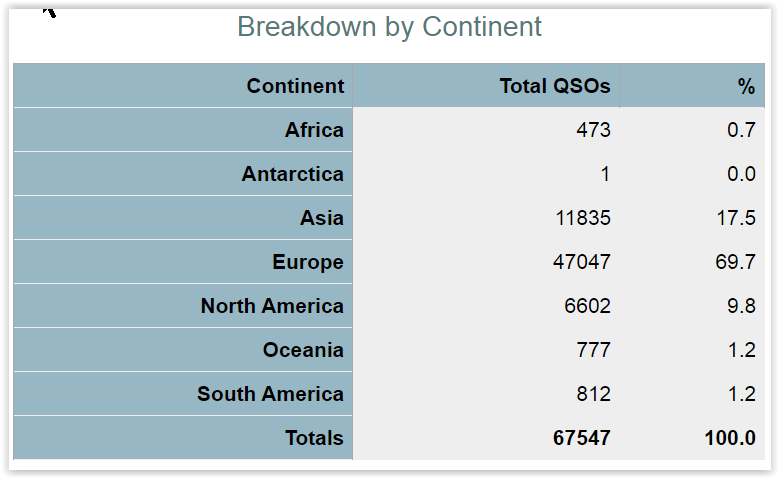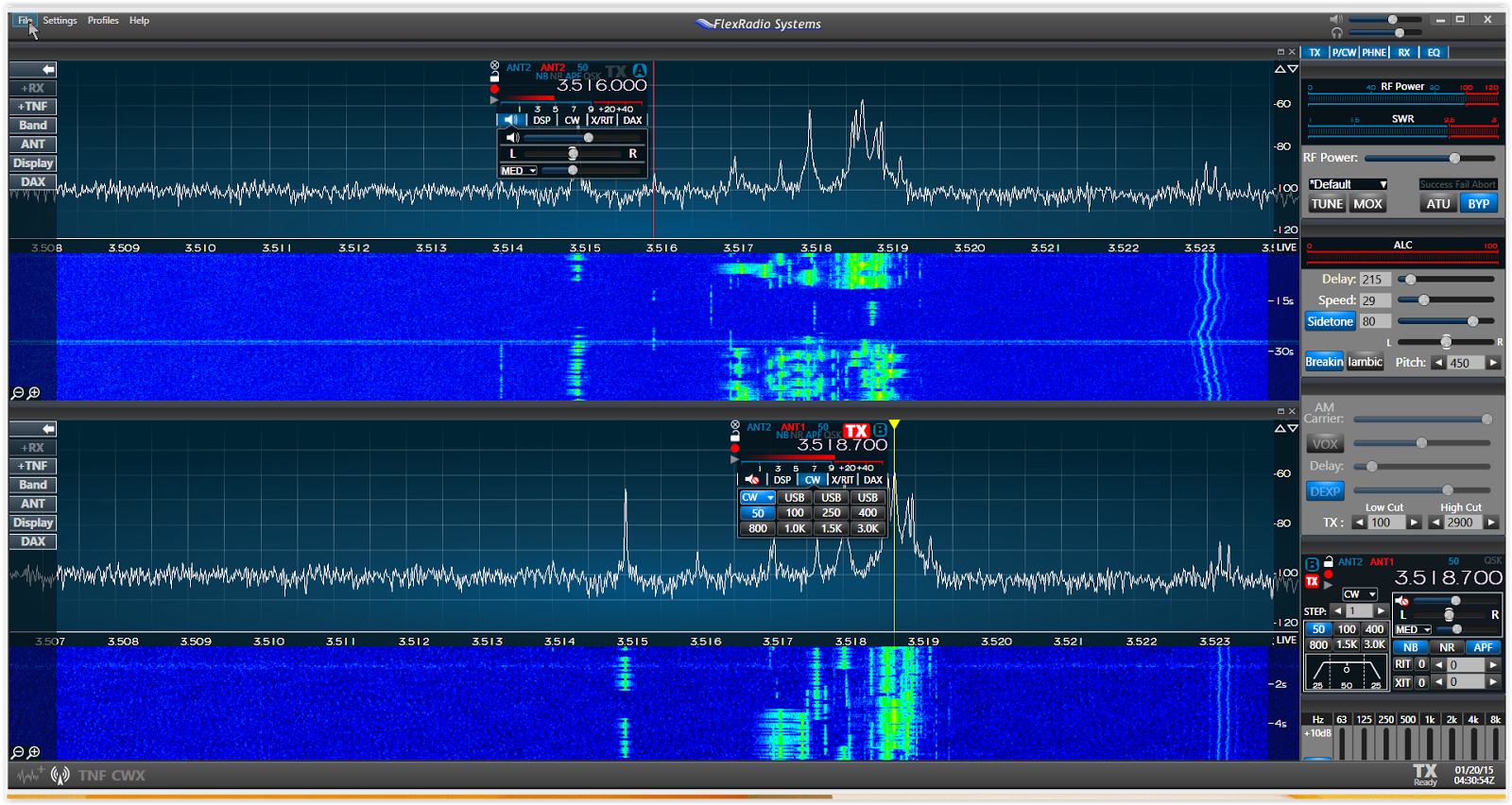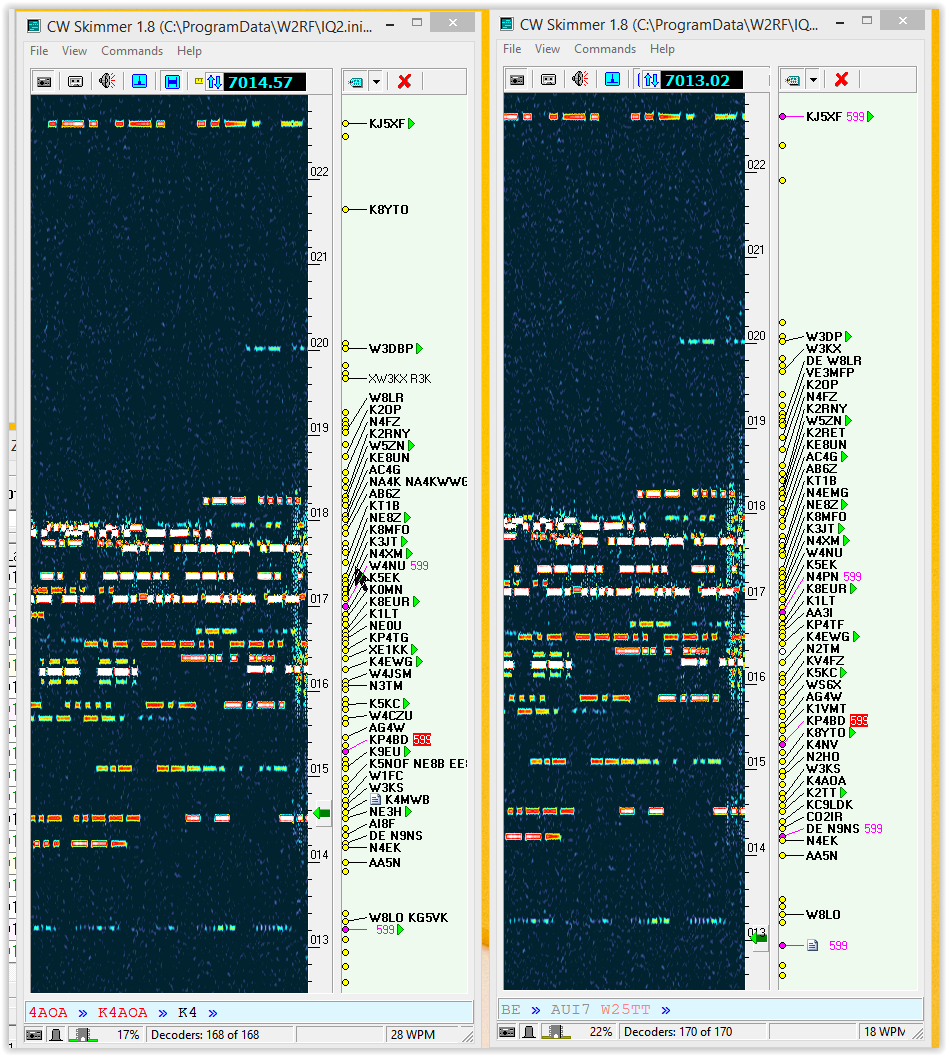This was the typical pileup on 40M, a barrage of RF! Notice the pileup is about 10 khz wide. The dilemma is where to place your transmitter in that mess so the DX will be able to discern your signal over his QRN and QRM.
On 30M this is typical of what I was seeing on the night I made contact
Notice the little trail of dots next to the cursor. I'm quite sure on his end the pileup was not all that different than the above 40M pileup. I tried to work them the night before on 30M and I saw the same dot trail about 7-10 khz up the band. This "10 up" was where the DX was working stations the night before, as reported by the Cluster spots. Propagation was such that this dot trail is all you could see of the stations calling the DX. In other words without this little crumb trail of callers you would have no idea where to place your transmitter. On the Anan this crumb trail was not visible because you can not see as far into the noise with that radio's panfall. I fired up "up 2" right in the center of the dot trail, and he was in the log in 3 calls. I never realized the advantage the Flex panfall provides prior to this contact.
My last contact on 40 was made in 2 calls. I simply watched the DX's pattern on Skimmer (as above) and noticed he was moving down the pileup. When he got to the bottom where interference was least I heard him work a W4 and saw the red 599 pop up on skimmer. I immediately clicked that freq and fired off a couple "W9OY's". He came right back and once again I was in the log
The op for both contacts was the excellent Kostas SV1DPI.
I understand the EP6T team had big QRN problems. Apparently they were set up next to a scooter rental store with many battery chargers a.k.a death to a DXpedition. They were licensed for a specific location so they could not move the station away from the noise. I can't imagine the frustration to try and hear weak callers through what was reported to be a S9 buzz saw. Fortunately I was able to crack the puzzle of where to transmit twice for confirmed contacts. Color me happy.
Propagation at my QTH started the week good but deteriorated over the next several days only to come back nicely yesterday which is when I made the 40M contact. I tried and tried on 80M but he was not hearing me on that band. I did hear them once on 20M but they were absent to me on every other band.
There is much kvetching on the DX boards about what a lousy operation this was but I didn't find it to be the case at all. It was merely a challenge. There have been many DXpeditions I have failed to contact and many I've had success contacting, it's just the nature of the business, and it's what makes DXing fun. I'm very pleased and grateful for the opportunity. Clearly making contact with EP6T was a challenge for NA hams.
For 67547 QSO's only 6602 were from NA on all bands. Given the nature of the huge pileups this would indicate very poor conditions (including their local QRN) most of the time between NA. The days I worked them I consistently heard them trying to control the pileup in favor of NA but the propagation wasn't cooperating compared to EU and neither was the behavior of the EU operators, but thems is the cards that was dealt. It's interesting to see nearly 5000 QSO's on 10M CW, and 10M overall competing strongly with 20M.
By Continent it also shows the difficulty of the NA path. I wish they had paid a little more attention to sunup and sundown propagation. Many of my local sundowns I could hear them peak on 80M but they were always running JA's at my local sundown which was the JA local sunup. When the JA's finally passed into daylight it was too late for me since EP6T had started to fade he was still copy-able but no longer enhanced.
I'm a CW only op so it's interesting for me to look at the broken out CW stats. For NA a little less than half were CW but very nearly half (including RTTY into the calc). According to the above it breaks out once you subtract out a RTTY percentage of 34% about 282 30M CW contacts were made with EP6T in NA. Except for the Flex 6300 I would not have been one of them.
73 W9OY






















